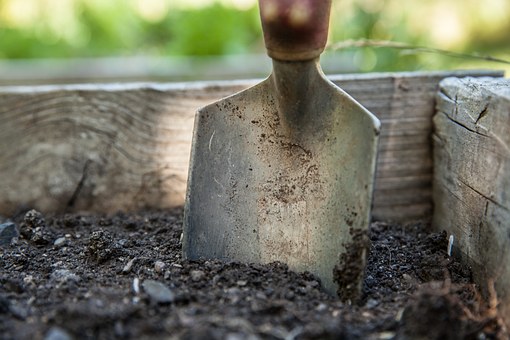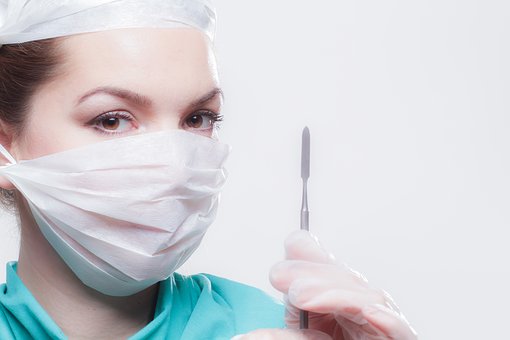Archived Blogs
|
In medical school, professors rolled their eyes as they explained historical cures that were once used to treat patients. Blood-letting, leeches, maggots, even packing a woman’s birth canal with dirt and leaves after childbirth. It sounded horrifying. Luckily, we’ve abandoned those medieval remedies, right? Not exactly. There’s the condition called polycythemia vera… It’s when your body produces too many red cells. The blood gets too thick and can cause a ‘traffic jam’ in your blood vessels which can lead to a stroke. The primary method of treating this condition is phlebotomy. Otherwise known as blood-letting. And you’ve probably heard that doctors are using leeches and maggots again. Leeches act as an artificial vein, removing old or excess blood that would interfere with a delicate surgery like a finger implantation after an amputation. And maggots? They clean wounds, removing decaying tissue and sparing the healthy, better than any surgeon can. But dirt? Surely, there’s no need for that in modern medicine? Let me tell you about some special dirt. It’s found in the Boho Highlands of Fermanagh in Northern Island and it’s been known to cure some infections. Interested? Let me give you some background. Streptomyces is a bacteria. (Even though it looks quite a bit like a fungus) It turns out to be quite old, evolving over 450 million years ago. It’s also quite special. Streptomyces is the source of many antibiotics. This bacteria secretes antibiotics to protect itself from a bacterial invasion during its growth cycle. Fascinating, right? Antibiotics that we use today, like chloramphicol, rifampicin, vancomycin, daunomycin and clavulanic acid, come from streptomycetes and their close relatives. We all know the importance of antibiotics in fighting infections. And most people realize that we’re facing more drug-resistant bacteria. We’re waiting for some company to create new antibiotics to fight those superbugs. But we might have a long wait. Why? It’s related to the finances of developing a new drug. (It’s always about money) It takes about ten years to develop a drug and then do rigorous testing of that new medicine. That’s a lot of money tied in research. Now imagine that your new drug, a splendid shiny new antibiotic, is released to the world. Infectious disease experts are impressed and excited about this new cure. What do they do? They immediately shout out: “Don’t use this antibiotic!” HUH? Here’s why. They want to save this impressive new cure for the worst of the infections. If everyone takes this new antibiotic for their sore toe or red throat, the bacteria will become resistant to it, too. It will no longer be as effective as it once was. But what company would invest in a medicine where the experts advise the primary care doctors not to use it? It make far more financial sense to develop a medical solution for high blood pressure or acid reflux. A drug they can make lots and lots of money on. So, we're running out of antibiotics. And that’s a big deal. And we may have to go back to how we treated serious infections centuries ago. Surgery--A surgeon cuts out the infection. “A chance to cut is a chance to cure,” I learned in medical school. Oddly, A Chance to Cut is a Chance to Cure is also a music album. It features sounds from surgeries—liposuctions and bone saws—mixed in with electric guitars and synthesizers. It actually received good reviews…
Here’s an example of their music. Here's another one...but it's only for the brave (and not squeamish) Back to the subject at hand. I’m hoping we don’t have to revert to ‘cutting’ out infections. In Ireland, the land of leprechauns and four-leafed clovers, they’ve found something in the soil that may be helpful against our fight against the super bugs. A new species of Streptomyces, one that stops the growth of 4 of 6 of the ESKAPE bacteria (the first letter of their name=ESKAPE) These bacteria: Enterococcus faecium, Staphylococcus aureus, Klebsiella pneumoniae, Acinetobacter baumannii, Pseudomonas aeruginosa, and species belonging to the Enterobacter genus are known for being highly resistant to our current antibiotics and are the leading cause for hospital acquired infections around the world. I’m not sure who thought to look in the dirt for a solution to our dire need to fight resistant bacteria but I found a quote that helps put it in perspective…. I'm Irish. We think sideways. Spike Milligan
0 Comments
Leave a Reply. |
Archives
October 2020
Categories |
COPYRIGHT 2017 SUSAN BADARACCO | Site Credits




 RSS Feed
RSS Feed